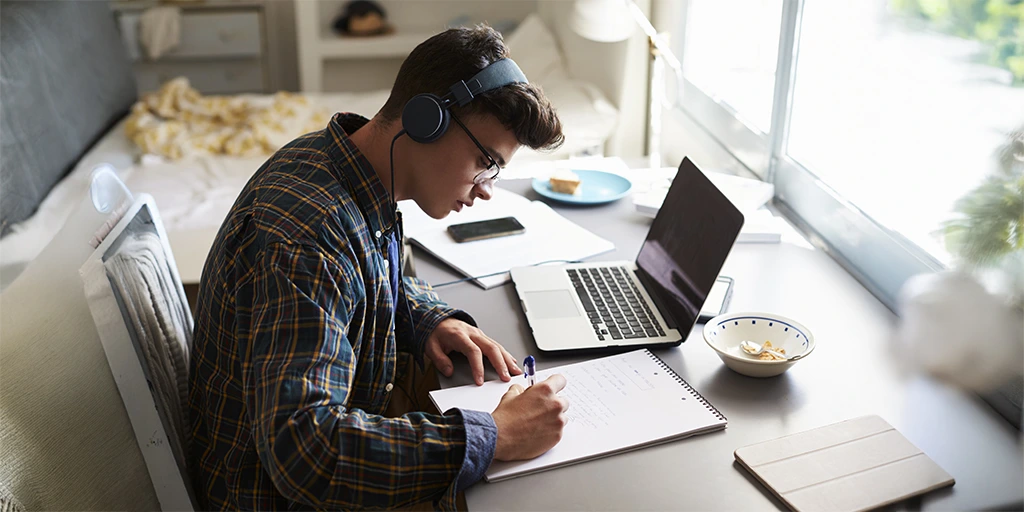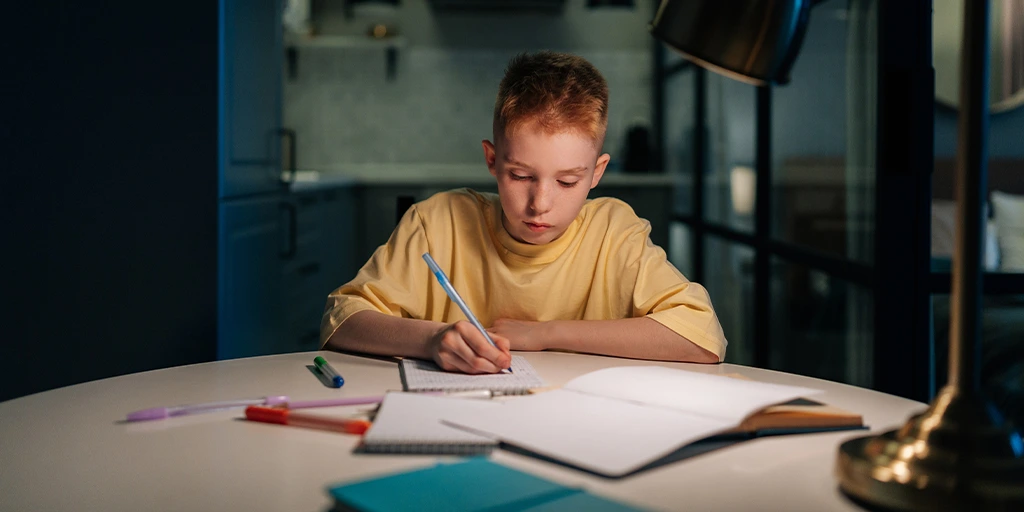Creating a Sensory-Friendly Homeschool Environment: Practical Tips for Success
Updated on March 31, 2025You’ve made the decision to homeschool your child with autism – that’s awesome! But there’s a lot more to successful homeschooling for autistic children than purchasing the right books and supplies. Kids with these developmental issues often have very strong sensory aversions, and can be negatively affected by their environment. So your first homework assignment is to customize a learning area in your home that takes their individual sensitivities into account. We’re here to help you get started.

Understanding Sensory Issues
Setting up an autism-friendly learning space at home will minimize disruptive behavior and allow your child to focus on and enjoy learning – which is what sensory-friendly homeschooling is all about. Since every autistic child has unique sensory needs, the first step is understanding which stimuli affect your child and then adjust your home setup accordingly. This includes identifying whether your child is hypersensitive (too responsive) or hyposensitive (under-responsive) to these stimuli.
How your child reacts to different sensory input can make it difficult for them to focus on and engage with the material. They might be overwhelmed by the lighting or sounds, have trouble being aware of their bodies, or it could be something as basic as their clothing feeling uncomfortable.
Here are the main categories of environmental factors that can negatively affect people with autism, to take into account in your home:
- Light that is too bright, harsh, or irregular (for example, reflective surfaces)
- Noises that are loud or occasional (like a car passing by)
- Smells that are in the room or which penetrate it from outside
- Certain textures of furniture, desktop items, etc.
Setting Up a Sensory-Friendly Learning Space
Practical strategies to help your child with autism thrive include knowing their specific preferences and triggers. Put this information into action when customizing your sensory-friendly learning environment. Here are a few practical autism homeschool tips for designing your ideal setup:
- Minimize clutter and distractions by having storage spaces and a limited amount of “stuff” in the room
- Provide soft lighting with incandescent bulbs (instead of fluorescent lights)
- Use essential oils and diffusers to create a calming atmosphere
- Ensure the room is relatively quiet, away from other kids and the street (or have noise-cancelling headphones for reducing distractions, in case)
- Consider getting sensory-friendly seating (bean bags, rocking chairs) and tabletops
- Post a schedule somewhere visible with clearly marked and frequent “movement breaks”

Using Sensory Tools to Enhance Learning
Now that you’ve got your homeschool setup for autism, it’s time to think about learning content. Here too, your child’s senses are critical for enabling their education. For example, if you are looking for effective ways to encourage communication with non-verbal children, you might use an Augmentative and Alternative Communication (AAC) device that allows kids to express themselves with pictures instead of words. In addition to the tools that support education directly, make sure to enhance the learning environment with sensory-friendly devices such as weighted lap pads and fidget tools that help with focus and self-regulation.
Establishing Routines for Comfort and Stability
People with autism usually prefer a strict routine in their daily life. This is because new situations and people can cause sensory overload, anxiety, and a feeling that things are out of control. When creating an autism-friendly classroom at home, it’s incredibly important to follow routines to support your child’s growth through a learning schedule that is set for certain activities at the same time each day. The schedule should be limited to tasks that are simple and short, and if needed, broken up into smaller steps.
A vital factor in these daily routines is how they are presented. Hang up an actual visual schedule board that uses pictures and a calendar format to set out days and weeks. Similarly, you should give your child a heads-up when they are about to move to the next activity through cues such as timers and verbal warnings.
Encouraging Movement and Breaks
Movement is crucial for children with autism and supports their learning process. Your homeschool schedule should include “brain breaks” throughout the day to give your child time to reset and relax.
Equally essential is physical activity that promotes fitness, which is part of overall healthy habits for families with special needs. When indoors, practice calming activities like yoga and stretching. When outdoors, going for walks in the neighborhood or in nature serves a double purpose of exercise and getting your child to feel more comfortable outside the home (not to mention the calming sensory effects of being in nature).

AngelSense for Safety and Independence
A critical part of venturing outside the home for any kid, and particularly those with autism, is safety. Wandering is a real danger, but with the AngelSense GPS tracking device, autistic children can feel safe while their parents enjoy greater peace of mind. AngelSense features include real-time tracking and 2-way voice monitoring, letting you trace and communicate with your child, wherever and whenever needed. The next time you speak with your child about safety, include a lesson that covers safety tips for preventing wandering in children with autism, and make sure to explain how AngelSense gives them greater independence.
Creating a Positive Learning Experience
Homeschooling a child with autism is a big commitment, but it offers many wonderful benefits. Together, you and your child will discover a learning environment where they can truly thrive and reach their full potential. Those who homeschool often discover and share many special moments that you otherwise may not experience if enrolled in a “regular” school. And don’t forget – nobody knows your child like you do, which makes a homeschool setup that you hand-design pretty hard to beat.
Get peace of mind from AngelSense, the groundbreaking AI-based assistive technology designed to enhance safety and peace of mind for individuals with special needs and their families. Our solution ensures you stay connected with your loved ones, empowering a higher level of independence while maintaining safety. Learn more about how AngelSense can make a difference for your family.

